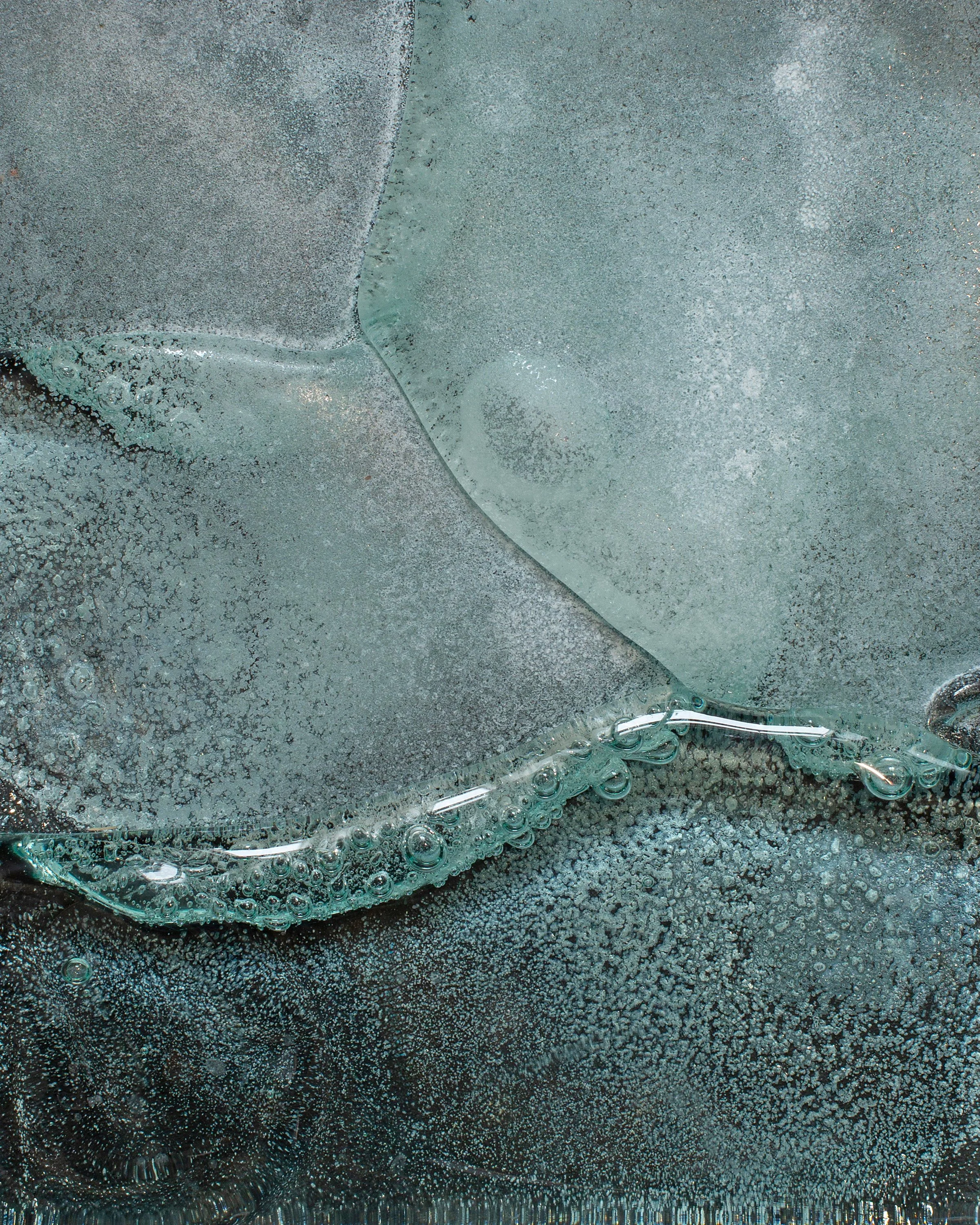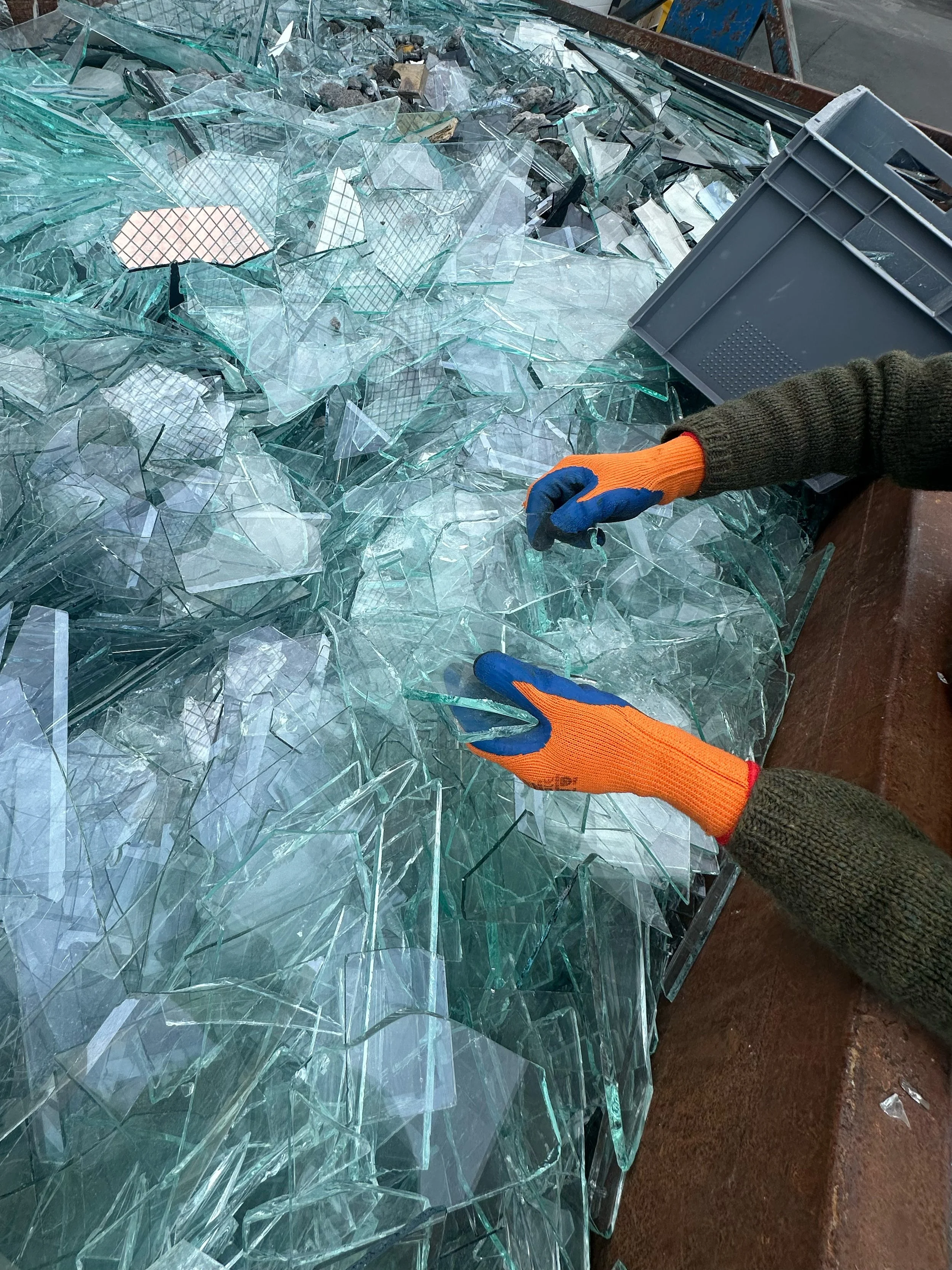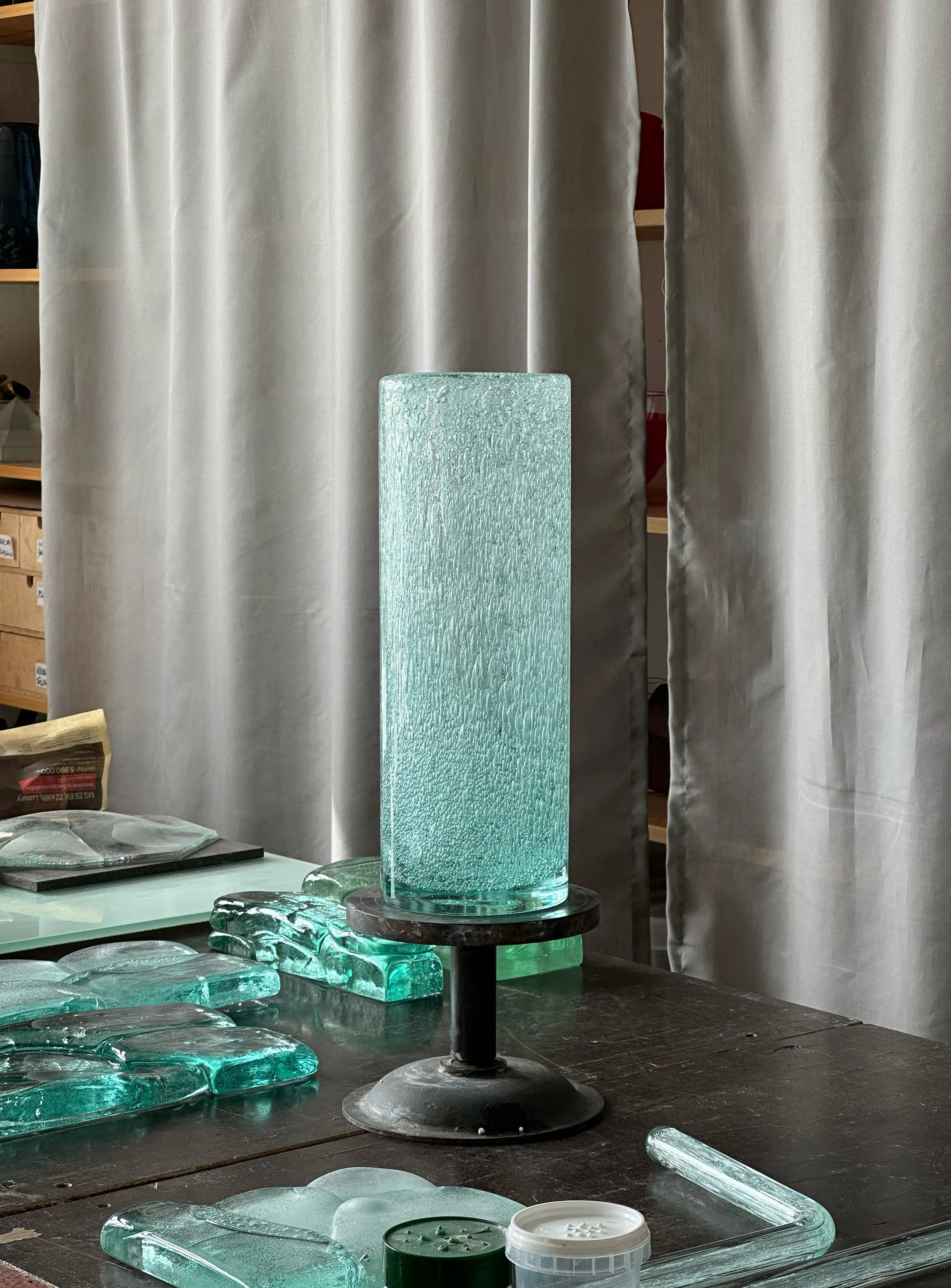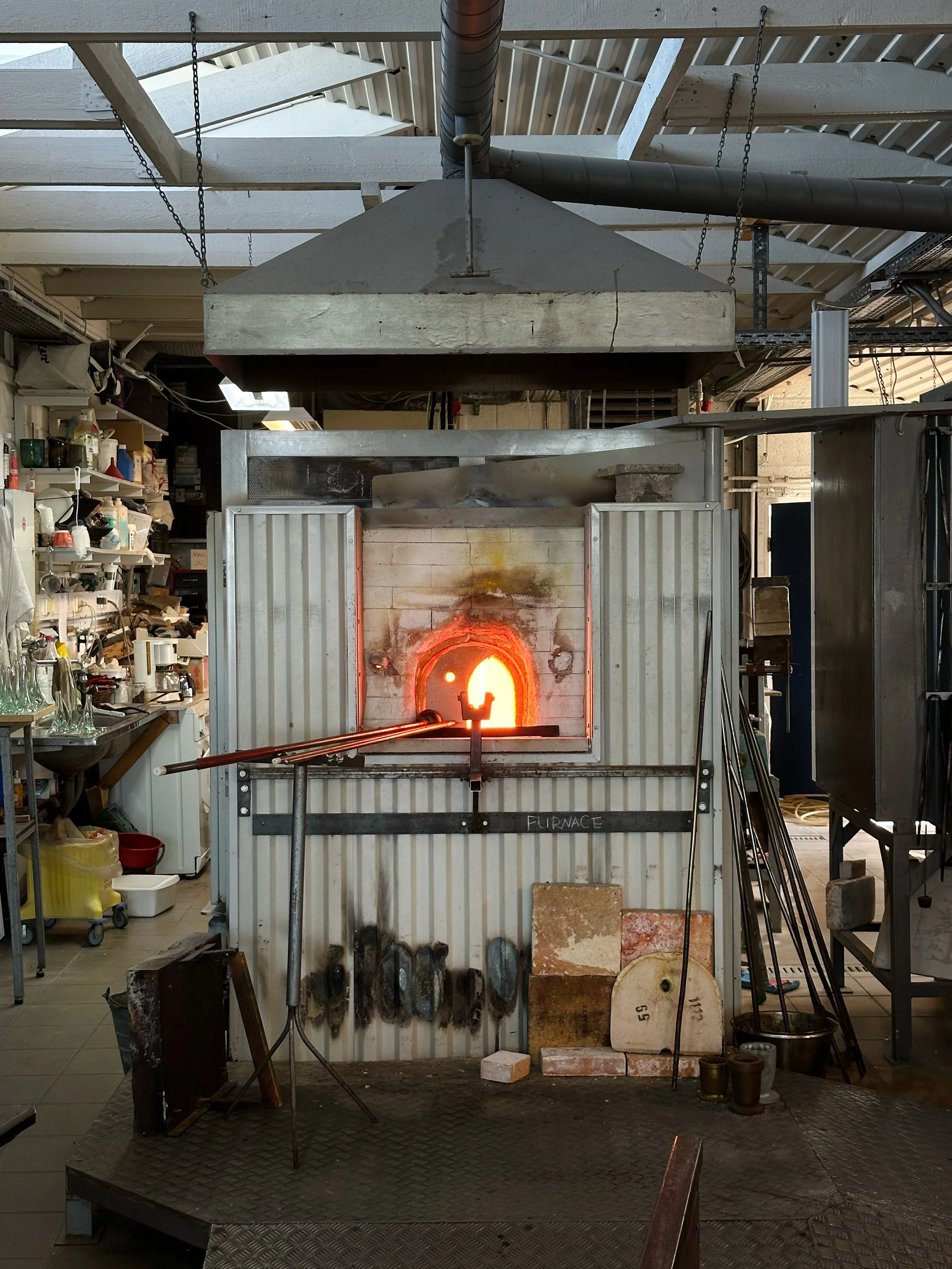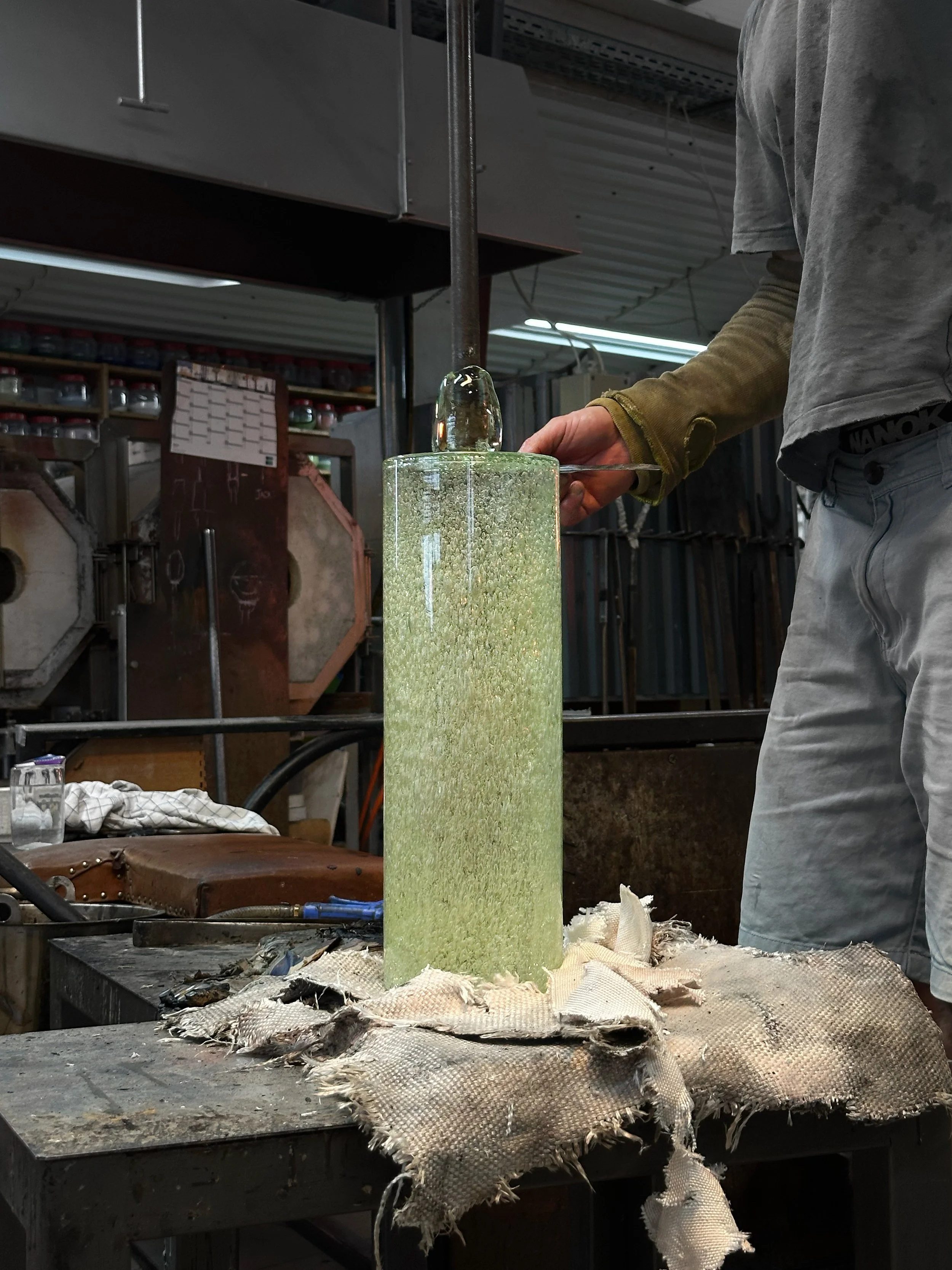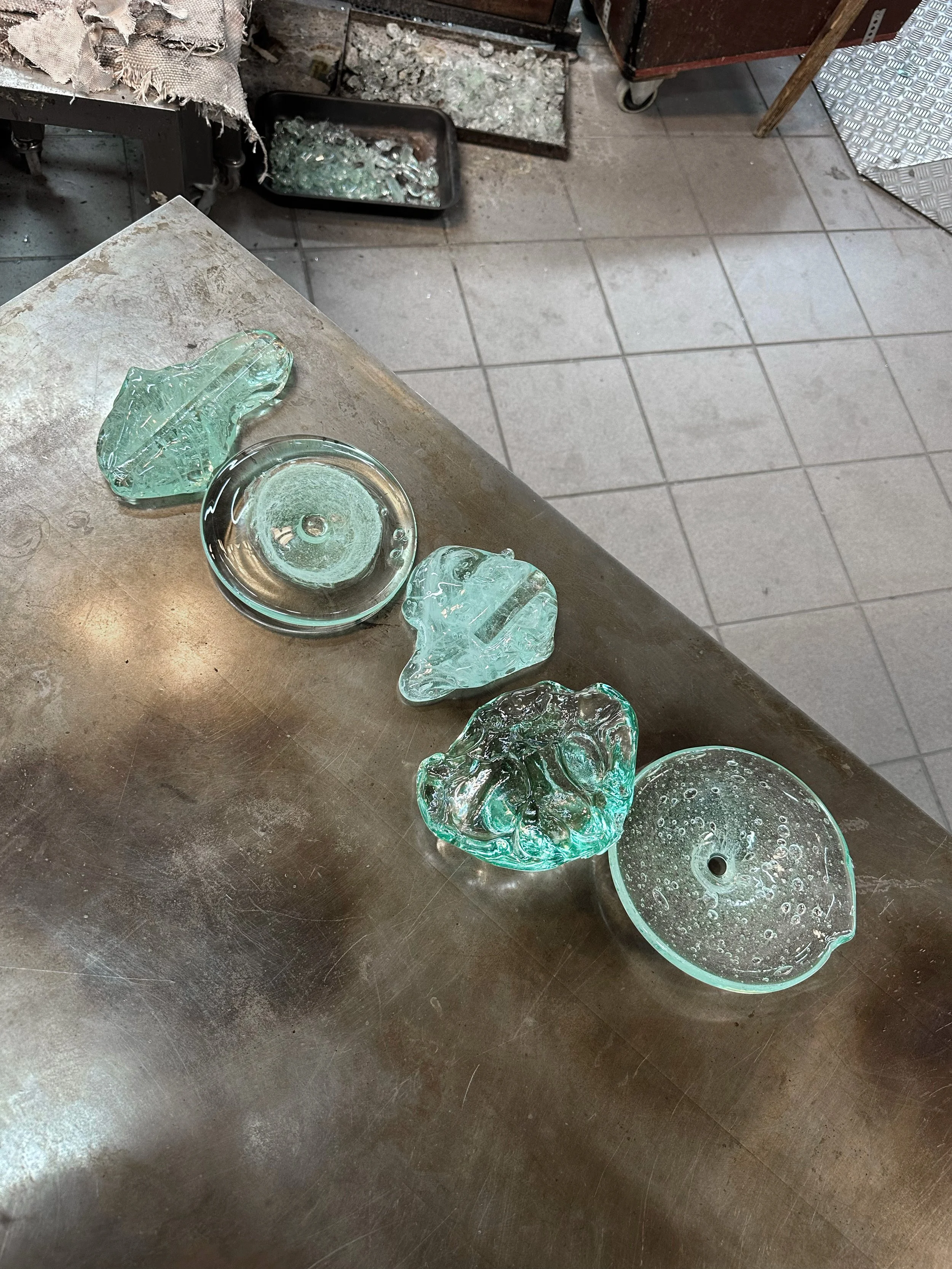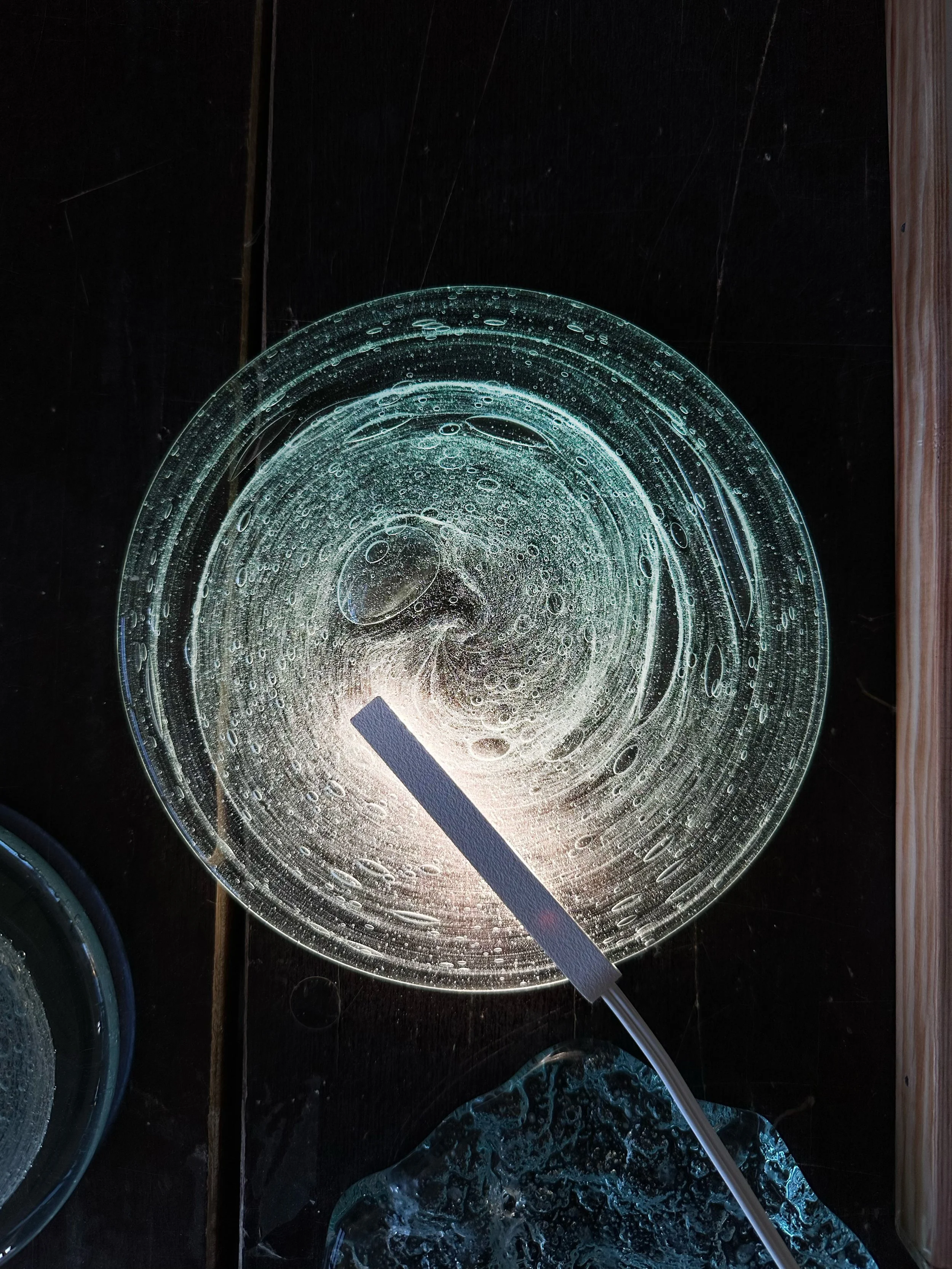Vitrum: Material Intelligence
Research by Johanna Seelemann
Vitrum approaches glass in a way similar to how a jazz musician interprets a melody—starting with something recognisable and then bending, stretching, and improvising until a new harmony emerges. Designer Johanna Seelemann doesn't attempt to silence the glass; instead, she listens attentively to its unique qualities, responding intuitively to every shimmer and crack. The result is a conversation between the creator and the material—spontaneous, fluid, and full of surprises.
In Iceland, glass often fails to find a second life of equal value. Much of it is discarded, forgotten beneath the soil, or crushed into low-grade forms. From this quiet disarray, Vitrum emerges—a collaboration with Reykjavík Glass and Hildiberg Lighting Studio that reimagines waste as a source of potential. Since the project began in 2018, it has produced vases, glass tiles, and other prototypes—each one shaped through a process that embraces the raw, unpredictable nature of reclaimed glass. What was once overlooked becomes a carefully crafted object, inviting a reconsideration of both material and value.
Improvising with Matter
Each piece begins with cullet—shards of pre-consumer and industrial glass sourced locally—melted down and reshaped by hand. Inside the furnace, the material transforms back into liquid, becoming unpredictable and vibrant. Air enters, bubbles form, and textures shift in the heat. Rather than resisting these irregularities, Seelemann embraces them. Subtle distortions, shifting transparencies, and delicate inclusions become notes in a larger composition—evidence of the dialogue between craftsmanship and material behaviour.
The glass is paired with fire-treated wood, its charred surface reminiscent of the burnt tools once used to shape the molten material.
Beyond Recycling
In Vitrum, glass transcends the linear concept of recycling. Rather than returning the material to its original form, the project invites transformation—a continuation rather than a return to its original state. By engaging with local glass flows and collaborating with artisans, designer Johanna Seelemann demonstrates that renewal does not need to equate to purity or perfection. It can emerge through variation, attentiveness, and care.
Each piece, whether a vase or a shelf, retains the chemical integrity of glass, ensuring it remains fully recyclable even as it becomes a collectable object. The irregularities within the remelted glass are embraced as part of the narrative—subtle traces of the process that capture moments of heat, movement, and material response.
Material Intelligence
Vitrum embodies a growing awareness in contemporary design: materials are not passive entities to be controlled and shaped; they are active participants in the creative process. This shift challenges the modernist ideal of mastery over matter, proposing instead a form of collaboration where knowledge emerges from observation, testing, and adaptation.
Glass is often praised for being infinitely recyclable, as it can be reused without any loss of quality and has no expiration date. However, in places like Iceland, where there are few remelting facilities and exporting glass is expensive, this potential is seldom realised.
The project Vitrum highlights this contradiction and explores what it means to work with a material that could be circular but isn't. It also examines the role design might play in changing this narrative. Instead of viewing discarded glass as waste, Vitrum treats it as a valuable and underutilised resource. This perspective emphasises that glass deserves not only technical reprocessing but also cultural recognition. By doing so, Vitrum reframes recycling as more than just a logistical process; it transforms it into a form of storytelling, care, and revaluation.
Concept & Design
Johanna Seelemann
johannaseelemann.com
@johannaseelemann
Production
Reykjavík Glass @reykjavikglass
Fjöl Works @fjol.works
Lighting Collaboration
Hildiberg Lighting Studio @hildiberg_design
Curated by
HÁKK Gallery @hakk_gallery
Brynhildur Pálsdóttir
Gunnar M. Pétursson
Presented at
HÁKK Gallery
19 September – 15 November 2025
Videography
Marino Thorlacius
Assistance
Lion Sanguinette
Laura Laipple
Malin Melzer
Supported by
Íspan Glerborg
Handverk og Hönnun
Iceland Design and Architecture Fund
Photography
Courtesy of Johanna Seelemann
Text
Nina Zulian
SOURCES

